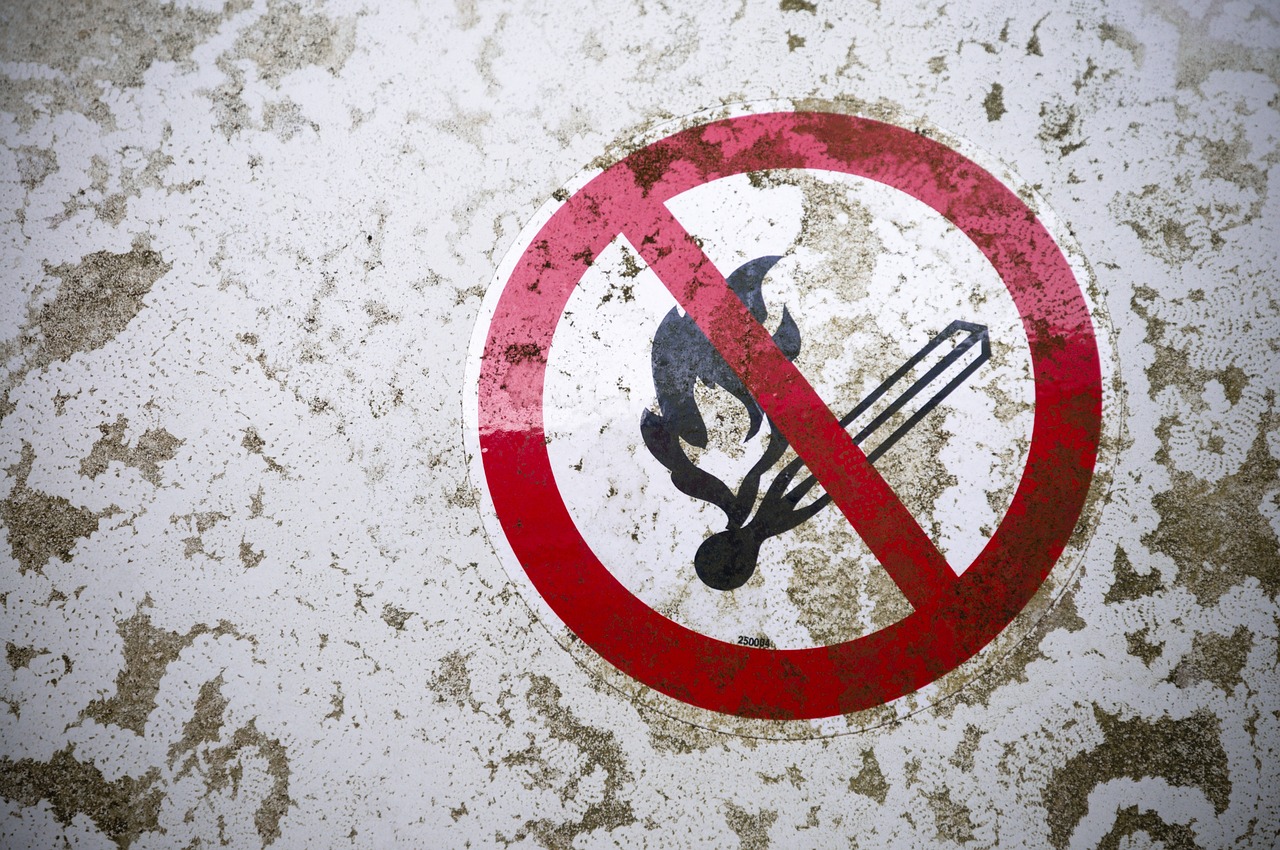Human Behavior and Safety Standards - The Analysis
In today's fast-paced world, the intersection of human behavior and safety standards is increasingly critical. As we navigate through various industries, it's essential to understand how our actions and decisions can either bolster or undermine safety protocols. This article delves into the intricate relationship between these two elements, exploring how psychological factors influence adherence to safety regulations and the importance of fostering a culture that prioritizes safety.
At the heart of this discussion lies the notion that safety is not merely a set of rules to follow; it is a mindset that must be cultivated within an organization. When employees perceive safety as a shared value rather than a checkbox to tick off, compliance becomes a natural extension of their behavior. This transformation requires a deep dive into the psychology of safety compliance, which we will explore in detail.
Understanding the psychological factors that drive safety compliance helps organizations create effective strategies to enhance adherence to safety standards, ultimately reducing workplace accidents and promoting a culture of safety. For instance, consider how fear can be a double-edged sword. While it can motivate individuals to adhere to safety protocols, excessive fear can lead to anxiety and even negligence. Therefore, striking the right balance is crucial.
Moreover, the concept of social influence plays a pivotal role in shaping behavior. When employees see their peers prioritizing safety, they are more likely to follow suit. This phenomenon underscores the importance of leadership and peer accountability in cultivating a safety-oriented culture. Encouraging open discussions about safety concerns can also alleviate fears and promote a sense of community within the workplace.
Training is the backbone of safety compliance. It equips employees with the knowledge and skills necessary to navigate potential hazards effectively. However, not all training programs are created equal. Effective training goes beyond mere information dissemination; it engages employees and fosters a genuine understanding of safety protocols.
Different types of safety training programs cater to various workplace environments, addressing specific hazards and ensuring that employees are well-equipped to handle potential risks effectively. For example:
- Onboarding Safety Training: This type of training introduces new employees to essential safety protocols, helping them understand their responsibilities and the importance of adhering to safety standards from day one.
- Ongoing Safety Training: Ongoing training ensures that employees remain updated on safety practices and regulations, reinforcing knowledge and encouraging the continuous improvement of safety behaviors in the workplace.
Evaluating the effectiveness of safety training programs is crucial for identifying areas for improvement. Organizations can utilize surveys and performance metrics to gauge employee understanding and application of safety protocols. By continuously assessing training methods, companies can refine their approaches, ensuring that employees are adequately prepared to maintain a safe work environment.
An organization's culture significantly impacts safety performance. A strong safety culture encourages open communication, accountability, and shared values, leading to improved safety outcomes and employee well-being. When safety becomes a core value, it permeates every level of the organization, influencing decisions and behaviors.
Building a positive safety culture involves leadership commitment, employee involvement, and consistent reinforcement of safety values. Leaders must model safe behavior and communicate its importance regularly. Employees should feel empowered to speak up about safety concerns without fear of retribution. This collaborative approach fosters an environment where safety is prioritized and valued by all.
Measuring safety culture through surveys and assessments helps organizations identify strengths and weaknesses. This process provides insights into areas that require attention to enhance overall safety performance. By understanding the perceptions and attitudes of employees towards safety, organizations can implement targeted interventions that address specific issues.
Behavioral safety approaches focus on identifying and modifying unsafe behaviors through observation and feedback. This proactive mindset encourages employees to take responsibility for their actions, fostering a culture of accountability. Observing behaviors in real-time and providing constructive feedback can significantly impact safety outcomes.
Observation and feedback techniques involve monitoring employee behavior and providing constructive feedback. This process helps reinforce safe practices and discourage unsafe actions in the workplace. By creating a feedback loop, organizations can continually improve safety behaviors and enhance overall compliance.
Creating incentives for safe behavior motivates employees to prioritize safety. Recognizing and rewarding individuals or teams that consistently demonstrate adherence to safety standards can create a positive reinforcement cycle. This approach not only boosts morale but also reinforces the importance of safety within the organizational culture.
Technology plays a pivotal role in enhancing safety standards, providing tools and systems that improve monitoring, reporting, and compliance. From safety management software to wearable technology, advancements are reshaping how organizations approach safety.
Safety management software streamlines safety processes, enabling organizations to track incidents, manage compliance, and analyze data to identify trends and areas for improvement in safety performance. By harnessing the power of technology, companies can make informed decisions that enhance workplace safety.
Wearable safety technology, such as smart helmets and vests, enhances worker safety by providing real-time data on environmental conditions and potential hazards. This immediate feedback allows for quick responses and risk mitigation, creating a safer work environment for all employees.
Q: Why is safety compliance important in the workplace?
A: Safety compliance is crucial because it helps prevent accidents and injuries, ensuring the well-being of employees and creating a productive work environment.
Q: How can organizations foster a safety-oriented culture?
A: Organizations can foster a safety-oriented culture by promoting open communication, involving employees in safety discussions, and reinforcing safety values through training and leadership commitment.
Q: What role does technology play in improving safety standards?
A: Technology enhances safety standards by providing tools for monitoring, reporting, and compliance, allowing organizations to identify trends and implement effective safety measures.

The Psychology of Safety Compliance
Understanding the psychological factors that drive safety compliance is crucial for any organization aiming to enhance its safety standards. At the heart of this understanding lies the concept that human behavior is influenced by a myriad of factors, including perception, motivation, and social dynamics. When employees feel that their well-being is genuinely valued, they are more likely to adhere to safety protocols. This connection between psychology and safety compliance can be likened to a spider's web; each strand represents different influences that, when woven together, create a strong structure that supports safe practices.
One of the primary psychological factors is perception of risk. If employees perceive the workplace as safe, they may become complacent, assuming that accidents are unlikely to happen. Conversely, if they are aware of potential hazards, they are more likely to engage in safe behaviors. This highlights the importance of clear communication about risks and the implementation of effective safety measures. By fostering an environment where employees can openly discuss their concerns about safety, organizations can shift perceptions and promote a culture of safety.
Another key element is motivation. Employees need to feel motivated to comply with safety standards. This can be achieved through various means, such as incentives for safe behavior or recognition for adhering to safety protocols. For instance, organizations can implement reward systems that recognize individuals or teams who consistently demonstrate safe practices. This not only boosts morale but also reinforces the importance of safety compliance. In fact, studies have shown that organizations that actively engage their employees in safety initiatives see a significant reduction in workplace incidents.
Social dynamics also play a pivotal role in safety compliance. Humans are inherently social beings, and the behavior of peers can greatly influence an individual's actions. When a culture of safety is established, employees are more likely to hold each other accountable, creating a supportive environment that prioritizes safety. This can be illustrated through the concept of social proof, where individuals look to their peers for guidance on how to behave. If they see their colleagues adhering to safety standards, they are more likely to follow suit.
To summarize, the psychology of safety compliance is a complex interplay of perception, motivation, and social dynamics. Organizations that recognize and address these psychological factors can develop effective strategies to enhance adherence to safety standards. This ultimately leads to a safer workplace, where employees feel valued and empowered to take responsibility for their own safety and that of their colleagues.
- What are the key psychological factors influencing safety compliance? The key factors include perception of risk, motivation, and social dynamics.
- How can organizations improve safety compliance? By fostering open communication, implementing reward systems, and building a strong safety culture.
- Why is social influence important in safety compliance? Because employees are more likely to follow safe practices when they see their peers doing the same.

The Role of Training in Safety Standards
This article explores the intricate relationship between human behavior and safety standards, examining how psychological factors influence adherence to safety regulations and the importance of fostering a safety-oriented culture.
Training is not just a box to check; it's the backbone of a robust safety culture in any organization. When we think about safety standards, it's easy to overlook the human element—our behaviors, our understanding, and our willingness to comply. Effective training programs are essential in bridging the gap between knowing what to do and actually doing it. They empower employees with the knowledge and skills needed to navigate their work environments safely and confidently.
Imagine stepping into a new job without any guidance on safety protocols. It’s like setting sail without a map. Employees need clear directions to avoid hazards and maintain compliance with safety regulations. This is where training becomes invaluable. It not only imparts crucial information but also instills a sense of responsibility and ownership over one’s safety and the safety of others.
Effective training can significantly improve knowledge retention and behavioral change in the workplace. Here are some key elements that make training programs successful:
- Interactive Learning: Engaging employees through hands-on activities and simulations helps them grasp safety concepts better than traditional lecture-based methods.
- Real-World Scenarios: Tailoring training to reflect actual workplace situations makes it more relatable, allowing employees to visualize how to apply safety practices in their daily tasks.
- Regular Updates: Safety standards and regulations are constantly evolving. Ongoing training ensures employees stay current with the latest practices and technologies.
Moreover, training should not be a one-time event but rather an ongoing process. Just like we wouldn't expect to learn to ride a bike in one lesson, safety knowledge requires reinforcement. Ongoing safety training ensures that employees remain updated on safety practices and regulations, reinforcing knowledge and encouraging the continuous improvement of safety behaviors in the workplace. This can take the form of refresher courses, workshops, or even informal safety meetings.
Different types of safety training programs cater to various workplace environments, addressing specific hazards and ensuring that employees are well-equipped to handle potential risks effectively. Here’s a quick overview:
| Type of Training | Description |
|---|---|
| Onboarding Safety Training | Introduces new employees to essential safety protocols, helping them understand their responsibilities and the importance of adhering to safety standards from day one. |
| Ongoing Safety Training | Ensures that employees remain updated on safety practices and regulations, reinforcing knowledge and encouraging continuous improvement. |
Evaluating the effectiveness of safety training programs is crucial for identifying areas for improvement and ensuring that employees are adequately prepared to maintain a safe work environment. Organizations can use surveys, quizzes, and practical assessments to gauge understanding and retention of safety protocols. This feedback loop not only helps in refining training methods but also reinforces the importance of safety among employees.
Q: Why is training important for safety standards?
A: Training equips employees with the necessary knowledge and skills to recognize and mitigate risks, fostering a culture of safety.
Q: How often should safety training be conducted?
A: Safety training should be ongoing, with regular updates to ensure compliance with evolving regulations and practices.
Q: What are some effective training methods?
A: Interactive learning, real-world scenarios, and regular updates are key methods that enhance knowledge retention and behavior change.

Types of Safety Training Programs
When it comes to safety in the workplace, one size definitely does not fit all. Different industries and environments present unique challenges and hazards, which means that tailored safety training programs are essential for effective compliance and risk management. Let's dive into some of the most common types of safety training programs that organizations implement, each designed to address specific needs and ensure that employees are equipped with the right knowledge and skills.
First off, we have general safety training, which is typically provided to all employees, regardless of their specific roles. This training covers fundamental safety principles, emergency procedures, and hazard recognition. Think of it as the foundation of a house; without it, everything else is at risk of collapsing. General safety training ensures that everyone understands the basic protocols, fostering a culture of safety from the very beginning.
Next, there’s job-specific safety training. This type of training is crucial for employees who work in environments with particular hazards, such as construction sites or laboratories. For example, a construction worker may receive training on the use of heavy machinery, while a lab technician might focus on handling hazardous materials. This specialized training not only helps employees understand the risks associated with their specific tasks but also empowers them to take proactive measures to mitigate those risks.
Another important category is onboarding safety training. This program is designed for new hires and serves as an introduction to the company’s safety culture and protocols. Onboarding training typically includes a comprehensive overview of safety policies, emergency procedures, and the proper use of personal protective equipment (PPE). By immersing new employees in a safety-oriented environment from day one, organizations can significantly reduce the likelihood of accidents and injuries.
Then we have ongoing safety training, which is essential for keeping employees updated on the latest safety regulations and practices. Safety standards are constantly evolving, and ongoing training ensures that employees remain knowledgeable and compliant. This could involve regular refresher courses, workshops, or even online training modules that employees can complete at their convenience. The key here is to make safety a continuous conversation rather than a one-time event.
Lastly, let’s not forget about emergency response training. This type of training prepares employees to act swiftly and effectively in the event of an emergency, such as a fire, chemical spill, or natural disaster. It often includes practical drills and simulations, allowing employees to practice their responses in a controlled environment. The goal is to instill confidence and ensure that everyone knows their roles and responsibilities when the unexpected occurs.
To summarize, the types of safety training programs can be categorized as follows:
| Type of Training | Description |
|---|---|
| General Safety Training | Fundamental safety principles applicable to all employees. |
| Job-Specific Safety Training | Targeted training for roles with unique hazards. |
| Onboarding Safety Training | Introduction to safety culture and protocols for new hires. |
| Ongoing Safety Training | Regular updates on safety regulations and best practices. |
| Emergency Response Training | Preparation for effective action in emergency situations. |
By implementing these diverse training programs, organizations can create a robust safety framework that not only meets regulatory requirements but also fosters a culture of safety that resonates throughout the workplace. Investing in comprehensive safety training is not just about compliance; it’s about protecting employees and ensuring a productive, hazard-free environment.
- What is the importance of safety training? Safety training is crucial to prevent workplace accidents and injuries, ensuring that employees understand how to recognize and mitigate risks.
- How often should safety training be conducted? Ongoing safety training should be conducted regularly, with refresher courses at least annually or whenever there are changes in protocols or regulations.
- What are the benefits of job-specific safety training? Job-specific training equips employees with the knowledge and skills needed to handle hazards unique to their roles, reducing the risk of accidents.
- Can safety training be done online? Yes, many organizations offer online safety training modules, making it convenient for employees to complete training at their own pace.

Onboarding Safety Training
Onboarding safety training is an essential first step in the journey of any new employee within an organization. Think of it as laying the foundation for a sturdy house; without a solid base, everything built upon it is at risk. This initial training not only introduces new hires to the company’s safety protocols but also instills a sense of responsibility towards maintaining a safe work environment. It's crucial for new employees to understand that safety is not just a set of rules to follow but a culture that they are now a part of.
During the onboarding process, new employees are typically exposed to a variety of safety topics, including:
- Emergency procedures, such as evacuation routes and fire drills
- Proper use of personal protective equipment (PPE)
- Identification of workplace hazards and how to report them
- Understanding the importance of safety signage and labels
By covering these topics, organizations can help new employees feel more confident and prepared as they step into their roles. Moreover, engaging training methods, such as interactive workshops or simulations, can make the onboarding experience more enjoyable and memorable. Remember, the goal is to create a lasting impression that emphasizes safety as a priority from day one.
Another vital aspect of onboarding safety training is the incorporation of real-life scenarios. When new hires can see how safety protocols apply in practical situations, they are more likely to appreciate their importance. For example, conducting a walkthrough of the workplace while pointing out potential hazards can help solidify the training. This hands-on approach not only reinforces the information but also encourages new employees to actively participate in their own safety education.
In summary, effective onboarding safety training is not just a checkbox to mark off in the employee orientation process. It's about creating a culture where safety is ingrained in every action and decision. By investing time and resources into this training, organizations can significantly reduce the likelihood of accidents and promote a safer workplace environment, ultimately leading to a more productive and engaged workforce.
- What is the primary goal of onboarding safety training?
The primary goal is to equip new employees with the knowledge and skills necessary to maintain a safe work environment, ensuring they understand safety protocols from the outset.
- How long should onboarding safety training last?
The duration can vary depending on the complexity of the job and the specific safety requirements, but it typically ranges from a few hours to a couple of days.
- What methods can be used for effective onboarding safety training?
Effective methods include interactive workshops, hands-on simulations, and real-life scenario walkthroughs, which help engage employees and reinforce their learning.
- How can organizations measure the effectiveness of onboarding safety training?
Organizations can measure effectiveness through assessments, feedback surveys, and monitoring safety incidents to see if there is a reduction in accidents post-training.

Ongoing Safety Training
Ongoing safety training is not just a box to tick; it’s a vital component of maintaining a safe workplace. Think of it as the regular oil change for your car—it keeps everything running smoothly and prevents breakdowns. In the fast-paced world we live in, safety standards and regulations are constantly evolving, and so are the potential hazards that employees face. Therefore, it’s crucial for organizations to implement continuous training programs that keep safety at the forefront of everyone’s mind.
By providing ongoing safety training, companies ensure that their employees are not only aware of the latest safety practices but are also able to apply them effectively. This type of training can take many forms, from refresher courses to hands-on workshops, and can be tailored to fit the specific needs of different teams or departments. For instance, a construction crew may benefit from practical demonstrations on how to properly use personal protective equipment (PPE), while office staff might need training on ergonomics and emergency evacuation procedures.
Moreover, ongoing safety training fosters a culture of safety within the organization. When employees see that their employer is committed to their safety, they are more likely to take safety seriously themselves. This can translate to a significant reduction in workplace accidents and injuries. It’s not just about compliance; it’s about creating an environment where safety is a shared responsibility. Regular training sessions can also serve as a platform for employees to voice their concerns and suggestions regarding safety practices, further enhancing engagement and ownership.
To measure the effectiveness of ongoing safety training, organizations should consider implementing feedback mechanisms. These can include:
- Surveys to gauge employee understanding and retention of safety protocols.
- Observations to see how well employees apply what they've learned in real-world situations.
- Regular assessments that challenge employees to demonstrate their knowledge of safety practices.
Ultimately, ongoing safety training is about making safety a continuous conversation rather than a one-time event. By investing in regular training, organizations not only protect their employees but also enhance their overall productivity and morale. Remember, a safe workplace is a happy workplace, and that’s something everyone can get behind!
- What is ongoing safety training? Ongoing safety training refers to continuous education and training provided to employees to keep them updated on safety practices and regulations.
- Why is ongoing safety training important? It helps employees stay informed about the latest safety standards, reduces workplace accidents, and fosters a culture of safety.
- How often should ongoing safety training be conducted? The frequency can vary depending on the industry, but regular sessions—typically quarterly or biannually—are recommended to ensure knowledge retention.
- What methods are used for ongoing safety training? Methods can include workshops, online courses, hands-on demonstrations, and safety drills.

Evaluating Training Effectiveness
Evaluating the effectiveness of safety training programs is not just a checkbox on a to-do list; it’s a vital process that can significantly impact workplace safety and overall employee well-being. Imagine investing time and resources into training, only to find out later that the employees didn’t retain the information or, worse, didn’t apply it when it mattered most. This is why a systematic approach to evaluation is essential.
To truly gauge the effectiveness of safety training, organizations can implement a combination of qualitative and quantitative methods. One common approach is the Kirkpatrick Model, which evaluates training on four levels:
| Level | Description |
|---|---|
| 1. Reaction | Measures how participants respond to the training (Did they find it engaging and relevant?). |
| 2. Learning | Assesses the increase in knowledge or skills (What did they learn?). |
| 3. Behavior | Evaluates if participants apply what they learned (Are they following safety protocols?). |
| 4. Results | Looks at the impact on organizational goals (Has there been a reduction in accidents?). |
By analyzing these levels, organizations can pinpoint specific areas for improvement. For instance, if employees report that they found the training unengaging, it might be time to revamp the delivery method. If knowledge retention is low, incorporating more hands-on activities or real-life scenarios could bridge that gap.
Additionally, gathering feedback through surveys and interviews can provide valuable insights. Consider asking questions like:
- What aspects of the training did you find most useful?
- Were there any topics that you felt were not adequately covered?
- How confident do you feel applying what you learned?
Another effective method is to conduct follow-up assessments or refresher courses to reinforce knowledge and skills. This not only keeps safety at the forefront of employees’ minds but also demonstrates the organization’s commitment to continuous improvement in safety standards.
Ultimately, evaluating training effectiveness is about fostering a culture of safety and accountability. It’s not just about compliance; it’s about creating an environment where employees feel empowered to prioritize safety in their daily activities. By regularly assessing and improving training programs, organizations can ensure that their workforce is not only knowledgeable but also motivated to maintain a safe work environment.
- Why is evaluating training effectiveness important? Evaluating training effectiveness helps organizations identify areas for improvement, ensuring that employees are well-prepared to adhere to safety standards.
- What methods can be used to evaluate training? Common methods include surveys, interviews, follow-up assessments, and the Kirkpatrick Model, which assesses reaction, learning, behavior, and results.
- How can feedback from employees improve training programs? Employee feedback provides insights into what works and what doesn’t, allowing organizations to tailor training to better meet the needs of their workforce.

Organizational Culture and Safety
When we talk about organizational culture, we're diving deep into the very soul of a company. It's not just a fancy term for a set of values; it’s the invisible thread that weaves together the behaviors, attitudes, and beliefs of every individual within an organization. Now, why should we care about this in the context of safety? Well, a strong safety culture can be the difference between a workplace where accidents are common and one where safety is a top priority. Imagine a ship sailing smoothly across calm waters versus one battling fierce storms; the former represents a strong safety culture, while the latter symbolizes chaos and risk.
Organizations that prioritize safety as a core value tend to foster an environment where employees feel empowered to speak up about potential hazards. This open communication is crucial because it creates a sense of accountability among team members. When everyone feels responsible for safety, it leads to a collective effort to uphold and improve safety standards. Moreover, a positive safety culture encourages employees to take ownership of their actions, which can significantly reduce the likelihood of accidents.
To illustrate the importance of a safety-oriented culture, let’s consider a few key elements that contribute to its development:
- Leadership Commitment: When leaders actively promote safety initiatives and lead by example, it sends a powerful message to employees about the organization’s priorities.
- Employee Involvement: Engaging employees in safety discussions and decision-making processes fosters a sense of belonging and responsibility.
- Consistent Reinforcement: Regularly revisiting safety protocols and celebrating safe behaviors keeps safety at the forefront of everyone’s mind.
But how do we measure the effectiveness of our safety culture? This is where tools like surveys and assessments come into play. By gathering feedback from employees, organizations can pinpoint areas of strength and identify weaknesses that need addressing. For instance, a survey might reveal that while employees understand safety protocols, they feel uncomfortable reporting unsafe conditions. This insight can lead to tailored training sessions aimed at improving communication and trust within the workplace.
In conclusion, fostering a robust organizational culture centered around safety is not just beneficial—it's essential. It creates a ripple effect that enhances employee morale, reduces accidents, and ultimately leads to a more productive work environment. So, the next time you're in a workplace, take a moment to reflect: is safety truly valued here? If not, it might be time to start steering the ship towards a safer horizon.
- What is organizational culture? Organizational culture refers to the shared values, beliefs, and practices that shape the social and psychological environment of a business.
- Why is safety culture important? A strong safety culture promotes open communication, accountability, and a shared commitment to safety, reducing the likelihood of workplace accidents.
- How can organizations improve their safety culture? Organizations can improve their safety culture by ensuring leadership commitment, involving employees in safety discussions, and consistently reinforcing safety values.
- What tools can be used to measure safety culture? Surveys and assessments are effective tools for measuring safety culture, helping organizations identify strengths and areas for improvement.

Building a Positive Safety Culture
Building a positive safety culture is not just a checkbox on a corporate agenda; it's a vital aspect of any organization that aims to prioritize the well-being of its employees. A positive safety culture embodies an environment where safety is not merely enforced but embraced by everyone—from the top management to the newest hire. It encourages open communication, where employees feel comfortable reporting unsafe conditions or behaviors without fear of retribution. This culture is rooted in trust, accountability, and shared values, creating a workplace where safety is seen as a collective responsibility.
To cultivate this environment, organizations must first demonstrate a strong commitment to safety at the leadership level. When leaders actively participate in safety initiatives, it sends a powerful message that safety is a core value of the organization. This commitment can be illustrated through regular safety meetings, visible support for safety programs, and the allocation of resources toward safety training and equipment. A leader’s involvement can motivate employees to engage more deeply in safety practices, fostering a sense of ownership over their own safety and that of their colleagues.
Moreover, employee involvement is crucial. When employees are given a voice in safety discussions, they are more likely to buy into the culture. This can be achieved through:
- Establishing safety committees that include employees from various departments.
- Encouraging suggestions for safety improvements and recognizing contributions.
- Conducting regular safety audits that involve team participation.
These strategies not only enhance safety practices but also help build camaraderie and trust among team members. It’s essential that every employee understands that their input is valued and that they play a critical role in shaping the safety culture.
Consistency is another key element. Safety values must be reinforced regularly through training, communications, and recognition programs. For instance, organizations can implement safety awards to celebrate teams or individuals who exemplify safe behaviors. These recognitions serve as reminders that safety is a priority and that the organization genuinely values the well-being of its employees.
Additionally, measuring the effectiveness of safety culture initiatives is vital. Organizations can utilize surveys and assessments to gauge employees' perceptions of safety practices and identify areas for improvement. By analyzing this data, companies can tailor their strategies to address specific concerns, ensuring that the safety culture evolves and adapts to the needs of the workforce.
In conclusion, building a positive safety culture is an ongoing journey that requires commitment, involvement, and consistent reinforcement. By fostering an environment where safety is prioritized and valued, organizations not only enhance compliance with safety standards but also promote a healthier, more productive workplace. Remember, a culture of safety is not just about rules and regulations; it's about creating a community where every member feels responsible for their own safety and that of their peers.
1. What is a safety culture?
A safety culture refers to the shared values, beliefs, and practices regarding safety within an organization. It encompasses how safety is prioritized and how employees perceive their roles in maintaining a safe work environment.
2. How can leadership influence safety culture?
Leadership can influence safety culture by demonstrating a commitment to safety, actively participating in safety initiatives, and encouraging open communication about safety concerns. Their behavior sets the tone for the entire organization.
3. Why is employee involvement important in building a safety culture?
Employee involvement is crucial because it fosters a sense of ownership and accountability regarding safety practices. When employees feel their voices are heard and valued, they are more likely to engage in safe behaviors and contribute to a positive safety culture.
4. How can we measure the effectiveness of our safety culture?
The effectiveness of a safety culture can be measured through surveys, safety audits, and assessments that evaluate employees' perceptions of safety practices. Analyzing this data helps organizations identify strengths and areas for improvement.

Measuring Safety Culture
Measuring safety culture is a vital component in understanding how well an organization prioritizes and practices safety. It goes beyond mere compliance with regulations; it delves into the very fabric of an organization’s ethos. By assessing safety culture, organizations can identify not just the strengths but also the weaknesses that may exist within their safety practices. This process often involves utilizing various methods, including surveys, interviews, and observational studies, to gather comprehensive data on employee perceptions and behaviors regarding safety.
One of the most effective ways to measure safety culture is through employee surveys. These surveys can gauge employees' attitudes towards safety, their willingness to report unsafe conditions, and their perceptions of management's commitment to safety. Questions might include:
- How often do you feel safe while performing your job?
- Do you believe that management takes safety seriously?
- Are you encouraged to report unsafe conditions without fear of reprisal?
Analyzing the results from these surveys can provide invaluable insights. For example, if a significant number of employees express concerns about management's commitment to safety, it may indicate a need for leadership training or enhanced communication strategies. Moreover, the feedback can be used to tailor safety programs that resonate with employees, ultimately fostering a more robust safety culture.
In addition to surveys, organizations can employ observational assessments. This involves monitoring employees in their work environment to see how safety protocols are followed in real-time. Observations can reveal discrepancies between what employees say and what they actually do, providing a clearer picture of the safety culture. For instance, if employees are seen bypassing safety equipment during routine tasks, it may highlight a culture that undervalues safety practices.
Another effective method for measuring safety culture is through focus groups. These sessions allow for in-depth discussions and can uncover underlying issues that may not be captured through surveys or observations. Employees can share their thoughts and feelings about safety practices, leading to a deeper understanding of the organizational climate regarding safety.
To summarize, measuring safety culture is not a one-size-fits-all approach. It requires a combination of methods to gather comprehensive data. Here’s a quick overview of the different measurement techniques:
| Measurement Technique | Description | Benefits |
|---|---|---|
| Employee Surveys | Quantitative data on employee perceptions | Identifies trends and areas for improvement |
| Observational Assessments | Real-time monitoring of safety practices | Reveals discrepancies between policy and practice |
| Focus Groups | In-depth discussions on safety culture | Uncovers underlying issues and fosters open dialogue |
Ultimately, the goal of measuring safety culture is to create a proactive environment where safety is a shared responsibility. By identifying and addressing areas of concern, organizations can enhance their safety performance and ensure that all employees feel empowered to contribute to a safer workplace.
- What is safety culture? Safety culture refers to the shared beliefs, practices, and attitudes that exist within an organization regarding safety.
- Why is measuring safety culture important? It helps organizations identify strengths and weaknesses in their safety practices, leading to improved safety outcomes.
- How can organizations improve their safety culture? By fostering open communication, providing ongoing training, and actively involving employees in safety initiatives.

Behavioral Safety Approaches
Behavioral safety approaches are pivotal in creating a safer work environment. They focus on understanding and modifying unsafe behaviors through observation and feedback, which can significantly reduce workplace accidents. Imagine a world where every employee takes personal responsibility for their safety and the safety of their colleagues. This proactive mindset is not just a dream; it can be achieved by fostering a culture that emphasizes behavioral safety.
At the heart of behavioral safety is the recognition that human behavior is a critical factor in workplace safety. By identifying risky behaviors and implementing strategies to change them, organizations can create a safer atmosphere. This approach involves several key components, including observation, feedback, and continuous improvement. Think of it as a cycle: observe unsafe behaviors, provide feedback, encourage safe practices, and repeat. Over time, this cycle can lead to a significant reduction in accidents and injuries.
One effective method within behavioral safety is the use of observation and feedback techniques. This involves supervisors or peers observing employees as they perform their tasks. By monitoring behaviors, organizations can identify unsafe practices that may not be immediately apparent. For instance, if a worker is seen neglecting to wear personal protective equipment (PPE), immediate feedback can be provided. This feedback should be constructive, emphasizing the importance of safety and the potential consequences of unsafe actions. Such interactions not only correct unsafe behaviors but also reinforce the organization's commitment to safety.
Moreover, creating incentives for safe behavior can significantly enhance the effectiveness of behavioral safety approaches. When employees are recognized and rewarded for adhering to safety protocols, it fosters an environment where safety becomes a shared value. This could be in the form of bonuses, public acknowledgment, or even simple verbal praise. The idea is to make safety a priority, where everyone feels motivated to contribute to a safer workplace. For example, an organization might implement a monthly safety award for the team that demonstrates the best safety practices. This not only encourages safe behavior but also builds camaraderie among employees.
Furthermore, organizations can utilize technology to support behavioral safety initiatives. For instance, safety management software can track observations and feedback, making it easier to analyze patterns over time. By compiling data on unsafe behaviors and the effectiveness of interventions, organizations can refine their strategies and focus on areas that need improvement. This data-driven approach ensures that safety measures are not just reactive but also proactive, addressing potential issues before they lead to accidents.
In conclusion, behavioral safety approaches are essential for cultivating a safety-oriented culture within organizations. By focusing on modifying unsafe behaviors through observation, feedback, and incentives, companies can significantly enhance workplace safety. It’s about creating a shared responsibility for safety, where each employee feels empowered to take action. Remember, safety is not just a set of rules; it’s a mindset that should permeate every aspect of the workplace.
- What are behavioral safety approaches?
Behavioral safety approaches focus on identifying and modifying unsafe behaviors in the workplace through observation and feedback. - How can observation and feedback improve safety?
By monitoring employee behavior and providing immediate, constructive feedback, organizations can reinforce safe practices and correct unsafe actions. - What role do incentives play in safety?
Incentives motivate employees to prioritize safety, recognizing and rewarding those who consistently adhere to safety standards. - Can technology aid behavioral safety initiatives?
Yes, technology such as safety management software can help track behaviors and analyze data to improve safety performance.

Observation and Feedback Techniques
Observation and feedback techniques are essential components in fostering a culture of safety within the workplace. By actively monitoring employee behavior, organizations can identify both safe and unsafe practices, which is crucial for implementing effective safety measures. Imagine a coach watching their team during practice; they don’t just sit back and observe, but rather, they provide real-time feedback to help players improve. Similarly, in a workplace setting, this dynamic of observation and constructive feedback can lead to significant improvements in safety compliance.
One effective method of observation is the use of structured safety audits. During these audits, trained personnel can assess how well safety protocols are being followed. This process not only helps in recognizing unsafe behaviors but also highlights areas where employees excel in safety practices. For example, if an auditor notices that a team consistently wears their personal protective equipment (PPE), this positive behavior can be acknowledged and reinforced.
Moreover, feedback should be timely and specific. When an unsafe behavior is observed, addressing it immediately ensures that the employee understands the context and can adjust their actions accordingly. This is akin to a teacher providing instant feedback to a student on their work; it enhances learning and retention. On the flip side, recognizing and praising safe behaviors can motivate employees to maintain such practices. For instance, a simple acknowledgment like, “I noticed you always wear your safety goggles while working; great job!” can go a long way in reinforcing positive behavior.
To facilitate effective observation and feedback, organizations can implement a few key strategies:
- Regular Training Sessions: Conduct training on how to observe and provide feedback effectively, ensuring that all employees understand the importance of these techniques.
- Peer Observation Programs: Encourage employees to observe each other’s work practices. This not only fosters teamwork but also promotes a shared responsibility for safety.
- Anonymous Reporting Systems: Create a system where employees can report unsafe behaviors without fear of retribution. This can help in identifying issues that might not be visible during regular observations.
In conclusion, observation and feedback techniques are vital for enhancing safety standards in any organization. By fostering an environment where employees feel supported and valued, organizations can significantly reduce accidents and injuries. The key lies in creating a proactive approach, where feedback is not just a tool for correction but a means of cultivating a robust safety culture. Remember, safety is not just a set of rules; it’s a mindset that can be nurtured through consistent observation and constructive feedback.
- What is the purpose of observation techniques in safety?
Observation techniques aim to identify unsafe behaviors and reinforce safe practices, ultimately enhancing workplace safety. - How can feedback improve safety compliance?
Timely and specific feedback helps employees understand the implications of their actions, encouraging them to adhere to safety protocols. - Are peer observation programs effective?
Yes, peer observation fosters a sense of shared responsibility for safety and can lead to improved compliance and teamwork.

Creating Incentives for Safe Behavior
Creating incentives for safe behavior in the workplace is not just a strategy; it's a vital component of fostering a culture where safety is prioritized and valued. Imagine a workplace where employees are not only aware of safety protocols but are also motivated to adhere to them because they know their efforts will be recognized and rewarded. This approach transforms safety compliance from a mere obligation into a shared goal, creating an environment where everyone feels responsible for their own safety and that of their colleagues.
Incentives can take many forms, ranging from monetary rewards to recognition programs, and each can have a profound impact on employee motivation. For instance, organizations can implement a “Safety Star” program, where employees who demonstrate exceptional commitment to safety practices are highlighted in company newsletters or receive small bonuses. This not only encourages the individual but also sets a benchmark for others to aspire to. However, it’s crucial that these incentives are aligned with the specific safety behaviors you wish to promote. Some effective incentives might include:
- Monetary Bonuses: Offering financial rewards for teams that meet safety targets can be a powerful motivator.
- Extra Time Off: Providing additional vacation days for employees who consistently follow safety protocols helps to reinforce the importance of safety.
- Public Recognition: Celebrating safety achievements during company meetings boosts morale and encourages others to follow suit.
However, it’s essential to ensure that the incentive program is fair and transparent. Employees should understand how they can earn rewards and what specific behaviors are being recognized. This clarity not only promotes trust but also encourages a competitive spirit that can lead to improved safety outcomes. Additionally, organizations should regularly evaluate the effectiveness of their incentive programs. Are they truly motivating safe behavior? Are there unintended consequences, such as employees cutting corners to achieve targets? Regular feedback from employees can help refine these programs, ensuring they remain effective and relevant.
Moreover, creating a culture of safety through incentives goes beyond just rewards; it also involves fostering open communication. Employees should feel comfortable discussing safety concerns without fear of repercussions. When they see that their input is valued and acted upon, they are more likely to engage in safe practices actively. Encouraging peer-to-peer recognition can also enhance this culture. When employees recognize each other’s efforts in maintaining safety standards, it cultivates a sense of community and shared responsibility.
In conclusion, creating incentives for safe behavior is a multifaceted strategy that requires careful planning, execution, and continuous evaluation. By recognizing and rewarding safe practices, organizations not only enhance compliance but also build a robust safety culture that benefits everyone involved. Remember, safety is not just a set of rules; it's a mindset that can be nurtured through positive reinforcement and shared commitment.
- What types of incentives are most effective for promoting safety?
Incentives such as monetary bonuses, extra time off, and public recognition have proven effective in motivating employees to prioritize safety. - How can I ensure that my incentive program is fair?
Transparency is key. Clearly communicate the criteria for earning rewards and regularly seek feedback from employees to refine the program. - Can incentives lead to negative behaviors?
Yes, if not managed properly, incentives can lead to employees cutting corners. It's crucial to monitor the program's impact and adjust as needed. - How often should I evaluate my incentive program?
Regular evaluations, at least annually, can help ensure the program remains effective and aligned with organizational goals.

The Impact of Technology on Safety
In today's fast-paced world, technology has become a crucial ally in enhancing safety standards across various industries. The integration of advanced tools and systems not only streamlines safety processes but also significantly improves monitoring, reporting, and compliance. Imagine a workplace where potential hazards are identified before they can cause harm—this is not just a dream but a reality thanks to modern technological innovations. With the right tools, organizations can proactively manage risks, ensuring a safer environment for all employees.
One of the most impactful advancements in safety technology is the development of Safety Management Software. This type of software serves as a comprehensive platform for organizations to track incidents, manage compliance, and analyze safety data. By using this software, companies can identify trends and areas that require improvement, ultimately leading to enhanced safety performance. For instance, organizations can generate reports that highlight recurring incidents, allowing them to address root causes effectively. The ability to access real-time data means that decisions can be made swiftly, which is critical in preventing accidents.
Another exciting innovation is the rise of Wearable Safety Technology. Devices like smart helmets, safety vests, and smart glasses are designed to provide real-time data on environmental conditions and potential hazards. For example, a smart helmet equipped with sensors can alert workers about changes in temperature, humidity, or even the presence of harmful gases. This immediate feedback allows for quick action, reducing the likelihood of accidents. Furthermore, these wearables can track employees' locations and movements, ensuring that they are in safe zones and adhering to safety protocols.
Consider the following table that summarizes key technologies impacting workplace safety:
| Technology | Description | Benefits |
|---|---|---|
| Safety Management Software | A platform for tracking incidents and managing compliance. | Improved data analysis and trend identification. |
| Wearable Safety Technology | Devices that provide real-time data on hazards. | Immediate feedback and enhanced situational awareness. |
| Automated Safety Alerts | Systems that notify employees of potential risks. | Proactive risk management and accident prevention. |
Moreover, the implementation of Automated Safety Alerts is transforming how organizations communicate safety risks. These systems can send notifications to employees about potential dangers in real time, allowing them to take necessary precautions before incidents occur. For instance, if a machine is malfunctioning, an automated alert can inform nearby workers to evacuate the area immediately. This kind of proactive communication is essential in preventing accidents and ensuring that everyone remains aware of their surroundings.
As we delve deeper into the impact of technology on safety, it's essential to recognize that while these innovations provide significant benefits, they also require proper training and integration into existing safety protocols. Employees must be educated on how to use these tools effectively to maximize their potential. When technology and training come together, organizations can create a robust safety culture that prioritizes employee well-being.
In conclusion, the impact of technology on safety is profound and multifaceted. By embracing advancements such as safety management software and wearable technology, organizations can not only enhance compliance with safety standards but also foster a culture of safety that protects employees. The future of workplace safety is bright, and technology is leading the way.
- How does safety management software improve workplace safety?
Safety management software enhances workplace safety by providing tools for tracking incidents, managing compliance, and analyzing data to identify trends that need addressing. - What are the benefits of wearable safety technology?
Wearable safety technology offers real-time data on environmental conditions and hazards, allowing for immediate responses to potential risks. - Why is training important for technology integration in safety?
Proper training ensures that employees can effectively use safety technologies, maximizing their benefits and enhancing overall safety culture.

Safety Management Software
In today's fast-paced work environment, Safety Management Software (SMS) has emerged as a critical tool for organizations aiming to enhance their safety standards. This software acts as a centralized platform that streamlines various safety processes, making it easier for companies to track incidents, manage compliance, and analyze data. Imagine having a digital assistant that not only reminds you of your safety protocols but also helps you understand the patterns in workplace incidents—this is precisely what SMS offers.
One of the primary advantages of Safety Management Software is its ability to provide real-time insights into safety performance. Organizations can gain a comprehensive overview of their safety metrics through dashboards that display key performance indicators (KPIs). This data-driven approach allows managers to identify trends, spot potential hazards, and implement corrective actions swiftly. For example, if a particular area in the workplace shows a spike in incidents, management can investigate and address the root causes before they escalate into serious issues.
Moreover, SMS facilitates better communication among team members. With features like incident reporting, safety audits, and training management, employees can easily report unsafe conditions or behaviors. This open line of communication fosters a culture of safety, where everyone feels responsible for maintaining a secure work environment. Think of it as a digital safety net that ensures everyone is on the same page regarding safety protocols and practices.
To illustrate the benefits of Safety Management Software, consider the following table that outlines its key features and advantages:
| Feature | Advantage |
|---|---|
| Incident Tracking | Allows real-time reporting and analysis of workplace incidents. |
| Compliance Management | Ensures adherence to local, state, and federal safety regulations. |
| Training Management | Tracks employee training and certifications, ensuring everyone is up-to-date. |
| Data Analysis | Identifies trends and areas for improvement, allowing for proactive safety measures. |
| Communication Tools | Enhances collaboration and reporting between employees and management. |
In addition to these features, many Safety Management Software solutions come equipped with mobile applications, enabling employees to report incidents or access safety information on-the-go. This is particularly beneficial for industries where workers are frequently on-site or in the field, as it ensures that safety is always a priority, regardless of location.
As we delve deeper into the digital age, the role of technology in safety management will only grow. By adopting Safety Management Software, organizations are not just complying with regulations but are actively investing in the well-being of their employees. In a world where safety can mean the difference between life and death, this investment is not just wise—it's essential.
- What is Safety Management Software? - It is a digital platform that helps organizations manage and improve their safety processes, including incident tracking, compliance management, and training.
- How can Safety Management Software improve workplace safety? - By providing real-time insights, facilitating communication, and allowing for data analysis, SMS helps organizations identify hazards and take proactive measures to enhance safety.
- Is Safety Management Software suitable for all industries? - Yes, while some features may be tailored to specific industries, the core functionalities of SMS can benefit any organization focused on improving safety standards.
- Can Safety Management Software be accessed on mobile devices? - Many SMS solutions offer mobile applications, allowing employees to report incidents and access safety information from anywhere.

Wearable Safety Technology
This article explores the intricate relationship between human behavior and safety standards, examining how psychological factors influence adherence to safety regulations and the importance of fostering a safety-oriented culture.
Understanding the psychological factors that drive safety compliance helps organizations create effective strategies to enhance adherence to safety standards, ultimately reducing workplace accidents and promoting a culture of safety.
Training plays a critical role in ensuring that employees understand and follow safety standards. Effective training programs can significantly improve knowledge retention and behavioral change in the workplace.
Different types of safety training programs cater to various workplace environments, addressing specific hazards and ensuring that employees are well-equipped to handle potential risks effectively.
Onboarding safety training introduces new employees to essential safety protocols, helping them understand their responsibilities and the importance of adhering to safety standards from day one.
Ongoing safety training ensures that employees remain updated on safety practices and regulations, reinforcing knowledge and encouraging the continuous improvement of safety behaviors in the workplace.
Evaluating the effectiveness of safety training programs is crucial for identifying areas for improvement and ensuring that employees are adequately prepared to maintain a safe work environment.
An organization's culture significantly impacts safety performance. A strong safety culture encourages open communication, accountability, and shared values, leading to improved safety outcomes and employee well-being.
Building a positive safety culture involves leadership commitment, employee involvement, and consistent reinforcement of safety values, creating an environment where safety is prioritized and valued by all.
Measuring safety culture through surveys and assessments helps organizations identify strengths and weaknesses, providing insights into areas that require attention to enhance overall safety performance.
Behavioral safety approaches focus on identifying and modifying unsafe behaviors through observation and feedback, fostering a proactive mindset towards safety and encouraging employees to take responsibility for their actions.
Observation and feedback techniques involve monitoring employee behavior and providing constructive feedback, helping to reinforce safe practices and discourage unsafe actions in the workplace.
Creating incentives for safe behavior motivates employees to prioritize safety, recognizing and rewarding individuals or teams that consistently demonstrate adherence to safety standards and contribute to a safer work environment.
Technology plays a pivotal role in enhancing safety standards, providing tools and systems that improve monitoring, reporting, and compliance, ultimately leading to better safety outcomes in various industries.
Safety management software streamlines safety processes, enabling organizations to track incidents, manage compliance, and analyze data to identify trends and areas for improvement in safety performance.
is revolutionizing how organizations approach workplace safety. These innovative devices, such as smart helmets, vests, and sensors, are designed to monitor environmental conditions and provide real-time feedback to employees. Imagine being in a bustling construction site where the risk of accidents is ever-present. With wearable technology, workers can receive instant alerts about hazardous conditions, allowing them to take immediate action to protect themselves.
These devices not only enhance individual safety but also contribute to overall safety management within an organization. For example, wearable technology can track vital signs, detect fatigue, and even monitor exposure to harmful substances. This data can be invaluable for safety managers, helping them identify potential risks and implement preventive measures.
Furthermore, the integration of wearable safety technology into existing safety protocols can foster a culture of accountability. When employees know they are being monitored and that their safety is a priority, they are more likely to adhere to safety standards. This creates a virtuous cycle where safety becomes a shared responsibility among all team members.
To illustrate the impact of wearable safety technology, consider the following table:
| Device | Functionality | Benefits |
|---|---|---|
| Smart Helmets | Augmented reality displays, environmental monitoring | Improved situational awareness, reduced accidents |
| Safety Vests | Real-time location tracking, vital signs monitoring | Enhanced communication, immediate health alerts |
| Wearable Sensors | Hazard detection, fatigue monitoring | Proactive risk management, increased employee safety |
In conclusion, wearable safety technology is not just a trend; it's a vital component of modern workplace safety strategies. By investing in these tools, organizations can significantly reduce accidents, enhance employee well-being, and ultimately create a safer working environment for everyone.
- What is wearable safety technology? Wearable safety technology refers to devices that monitor environmental conditions and provide real-time feedback to enhance workplace safety.
- How does wearable technology improve safety? It helps in real-time hazard detection, monitors vital signs, and fosters a culture of accountability among employees.
- Are there specific industries that benefit more from wearable safety technology? Yes, industries like construction, manufacturing, and oil & gas see significant benefits due to high-risk environments.
Frequently Asked Questions
- What psychological factors influence safety compliance?
Psychological factors such as perception of risk, motivation, and individual attitudes play a significant role in safety compliance. When employees perceive a genuine risk in their environment, they are more likely to adhere to safety standards. Additionally, motivation driven by personal responsibility and organizational support can enhance compliance.
- How important is training for safety standards?
Training is crucial for safety standards as it equips employees with the knowledge and skills necessary to recognize and mitigate hazards. Effective training programs not only improve knowledge retention but also foster a culture of safety, encouraging employees to actively engage in safe practices.
- What types of safety training programs are available?
There are several types of safety training programs tailored to different workplace environments, including onboarding safety training for new employees, ongoing safety training to keep everyone updated, and specialized training for specific hazards. Each type is designed to address unique risks and ensure comprehensive safety awareness.
- How can organizations evaluate the effectiveness of safety training?
Organizations can evaluate the effectiveness of safety training through assessments, surveys, and monitoring safety performance metrics. By identifying areas for improvement and gathering feedback from employees, organizations can refine their training programs to better meet safety needs.
- What is a safety culture, and why is it important?
A safety culture is the shared values and behaviors regarding safety within an organization. It is essential because a positive safety culture promotes open communication, accountability, and a collective commitment to safety, leading to improved safety outcomes and overall employee well-being.
- How can organizations build a positive safety culture?
Building a positive safety culture involves strong leadership commitment, active employee involvement, and consistent reinforcement of safety values. Organizations should encourage feedback, recognize safe behaviors, and provide resources to support a culture where safety is prioritized.
- What are behavioral safety approaches?
Behavioral safety approaches focus on observing and modifying unsafe behaviors in the workplace. By providing feedback and fostering a proactive mindset towards safety, these approaches encourage employees to take responsibility for their actions and contribute to a safer work environment.
- How does technology impact safety standards?
Technology significantly enhances safety standards by providing tools for monitoring, reporting, and compliance. Innovations such as safety management software and wearable safety technology improve data analysis and real-time hazard detection, leading to better safety outcomes across various industries.
- What is safety management software?
Safety management software is a digital tool that streamlines safety processes, allowing organizations to track incidents, manage compliance, and analyze data. This software helps identify trends and areas for improvement, ultimately enhancing overall safety performance.
- What role do wearable safety technologies play?
Wearable safety technologies, like smart helmets and vests, provide real-time data on environmental conditions and potential hazards. These devices enable workers to respond immediately to risks, enhancing their safety and reducing the likelihood of accidents in hazardous environments.



















